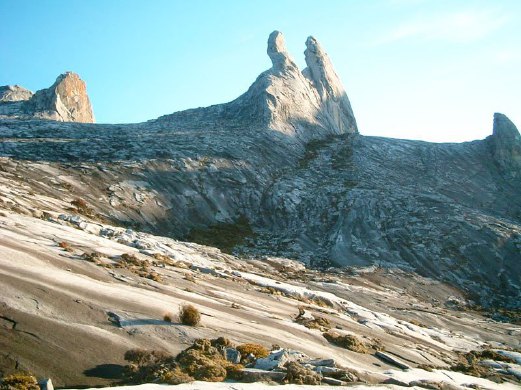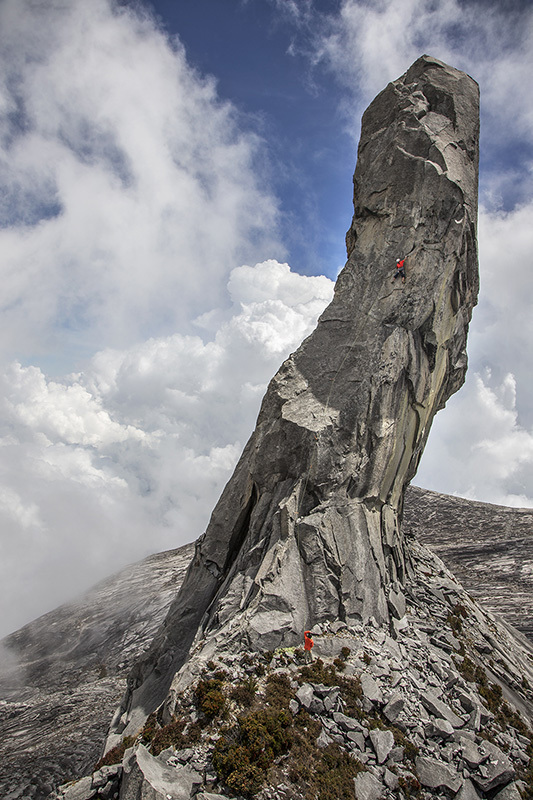8 June 2015
The Mount Kinabalu rockfall on Friday
Posted by Dave Petley
The Mount Kinabalu rockfall
The Mount Kinabalu rockfall on Friday, triggered by a shallow M=6.0 earthquake, is thought to have killed 19 people. A significant number of them appear to have been children from Singapore on a school trip to climb the mountain. They were truly in the wrong place at the wrong time, a real tragedy.
Whilst there appears to have been multiple landslides on the mountain, and indeed elsewhere, much of the loss seems to have come from the collapse of a rock pillar that formed one half of the “Donkey’s Ears” on the mountain. This is an image of this unusual rock formation before the earthquake:
.
And this is how they look now (via Twitter):
.
The column that collapsed is much larger than it might appear from the images. By coincidence, Planet Mountain ran an article late last week about new climbing routes on the Donkey’s Ears:
.
Interestingly, just below the climber in the image above there is a clear discontinuity inclined towards the right. About 20 m down there is another with a very similar inclination. I wonder if one of those was the detachment plane?
Whilst the image above shows that rockfalls on this column were far from uncommon (there is a huge amount of rockfall debris at the foot of the column, much of which is very large), this collapse event is very interesting. The column above would appear to be really vulnerable to the effects of seismic shaking, such that it is quite surprising that it has not collapsed previously. Does this indicate that the shaking associated with this seismic event was unusual in some way? The key is likely to be the very shallow nature of this earthquake, and its proximity to the mountain. This is the location, as given by the USGS, with Mount Kinabalu marked as well:
.
Such an earthquake could generate high Peak Ground Accelerations, but only over a very small area. These accelerations could have been amplified at the summit of the mountain. Thus. the key was probably the proximity of the earthquake event to the mountain and the shallow nature of the event. As such it may well prove to be an extraordinary but deeply tragic fluke.






 Dave Petley is the Vice-Chancellor of the University of Hull in the United Kingdom. His blog provides commentary and analysis of landslide events occurring worldwide, including the landslides themselves, latest research, and conferences and meetings.
Dave Petley is the Vice-Chancellor of the University of Hull in the United Kingdom. His blog provides commentary and analysis of landslide events occurring worldwide, including the landslides themselves, latest research, and conferences and meetings.